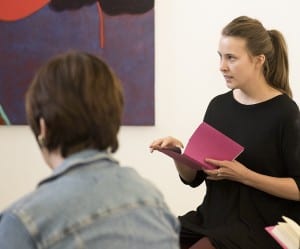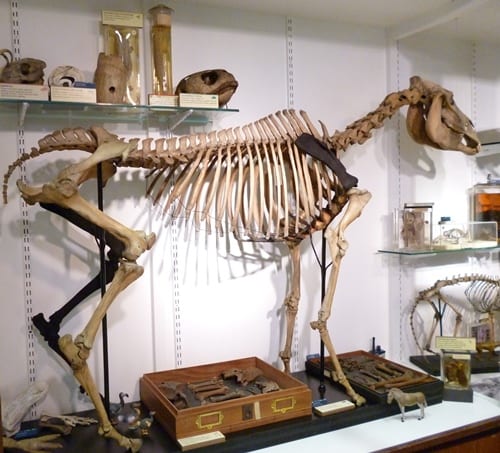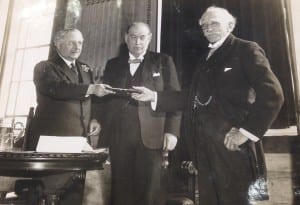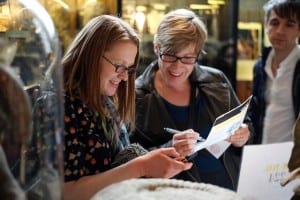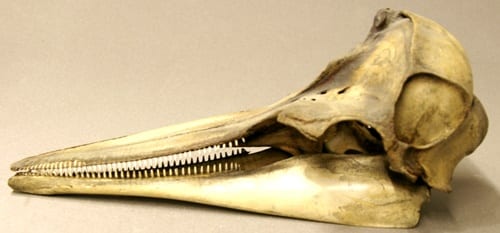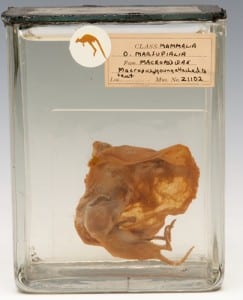Social Constructs, Slade Coldstream prize 2015
By Jenny M Wedgbury, on 31 July 2015
She reads:
“Where am I? Inside. Outside. Included. Excluded”
Pause. Changing page. She continues:
“ I, a mime student: an actor without words. I, a dancer: repeating movement by movement. Again and again”
Underwhelming Fossil Fish of the Month: July 2015
By Mark Carnall, on 31 July 2015
According to Wikipedia, the rule of three is a writing principle that suggests that things that come in three are inherently funnier, more satisfying or more effective than other numbers of things. However, in recent years, scholars have been unearthing a mountain of evidence to suggest that the rule be downgraded to, at best, a rule of thumb, with the more militant scholars going as far to say it should be the curse of three, citing Hobbit films, the nephews of Donald Duck and Brontë sisters as key evidence. This month’s underwhelming fossil fish was once in three parts but has been stuck together using sticky back plastic and chewing gum expertly and still isn’t very interesting.
Tentative introduction over, welcome to July’s Underwhelming Fossil Fish of the Month, a monthly foray into the deeply dull and noteunworthy world of fossil fish from the Grant Museum collection. If I were you, I’d recommend going and making yourself a tea or coffee. That’s a much better use of your time. Read the rest of this entry »
Bringing plaster sculptures to life
By Jenny M Wedgbury, on 29 July 2015
One of our volunteers, Agata Matusielanska, MA in Cultural Heritage Studies at University College London, writes about her experience of working on the Flaxman app over the summer.
As a volunteer at UCL Art Museum I’ve recently been working on uploading information into the new Flaxman app, which highlights the work of artist John Flaxman (1755 – 1826) in the Art Museum’s collection. The main place you can see Flaxman’s work is in the Flaxman Gallery, a space in the Main Library. The gallery is probably best known to students as a place to have a lunch or ring friends during periods of studying crisises. Probably not many of them pay attention to the amazing 39 plasters displayed on the wall. UCL Art Museum contains the world’s largest single holding of Flaxman material. The subjects of the plaster casts in the Flaxman Gallery vary from studies for memorials and monuments to bible scenes.
The world’s rarest skeleton rides again… on four legs
By Jack Ashby, on 28 July 2015
Using cutting-edge technology, the world’s rarest skeleton – a South African extinct zebra called a quagga – has regained its missing hind limb.
After a brilliant year of fundraising and conservation work, we are nearing the end of a major project to restore 39 of our largest and most significant skeletons to their former glory. The main focus of the project, named Bone Idols: Protecting our Iconic Skeletons, has been our quagga – which is one of only seven quagga skeletons to survive globally. The Guardian gave the project a particularly positve write-up (read the comments if you want to see some of the more unexpected outcomes of media relations. *blushes*).
The last living quagga died in 1883, having been hunted to extinction by farmers and skin-collectors. The Grant Museum specimen is the only one on display in the UK but the skeleton was incomplete – the right shoulder blade and one of its legs has long been missing, probably since World War II.
Specimen of the Week 198: Ammonite-ee-hee*
By Mark Carnall, on 27 July 2015
In both sad and happy news, I’m off to pastures new at the end of August, leaving the Grant Museum after what will be ten years and off to the Oxford University Museum of Natural History. Although that’s still a while away yet, the schedule for the specimen of the week writing mean that this will be my last specimen of the week.
One question I get a lot working at the Grant Museum is “What is your favourite specimen?”. My normal answer is that it changes from week to week depending on what I’ve recently been working on or the specimens I’ve become familiarised with which have been requested for use by researchers. However, I do have a soft spot for this week’s specimen of the week which has been used in teaching and research and hundreds, if not thousands of people have got hands on with this specimen in family and school handling activities. I was pleasantly surprised to find that it hadn’t already been featured in this blog series either.
This week’s (and my final) specimen of the week is… Read the rest of this entry »
JA Fleming – Discoveries From The Archive.
By Nick J Booth, on 24 July 2015
This guest blog has been written by Kelsey Svaren, a placement student who has been working with us over the past few months.
A few weeks ago I spent some time in UCL Special Collections working my way through the 24 boxes of material that John Ambrose Fleming left to UCL. I was able to look at these boxes in the span of four days, and let me tell you that is not an easy feat! Although I spent more time on certain boxes and documents than others, I feel I got a good overall view of what Fleming wanted UCL to have in its possession and can understand how the University’s history is interwoven with that of Fleming’s. During this time, I have been able to make some generalised conclusions about this man; the one who gave us the technology for so many inventions that people find themselves dependent upon today.
Why do museums bother running events?
By Dean W Veall, on 23 July 2015
Dean Veall here. All museums do them and we here at the Grant Museum did A LOT of them over the last year: events. We ran a rich and diverse programme of events that included an improvised opera performance, a games night, film screenings, a queer takeover, talks and much much more. But why? Why do we and other museums bother running events for an adult audience when visits by this group appear to be continuing to climb? [1] Read the rest of this entry »
Specimen of the Week 197: The Common Dolphin Skull
By Will J Richard, on 20 July 2015
Hello! Will Richard here, putting fingers to keyboard once again to bring you the next instalment of specimen of the week. And this week I am going to make things easy for myself. I’ve had enough of subspecies versus species, questionable (mis)identifications, taxing taxonomy and chaotic cladistics. So this time I’m keeping it simple. A cut and dried case: the common dolphin. What could be clearer?
Oh…
Specimen of the Week 196 : A Real Fossil Pterosaur
By Tannis Davidson, on 13 July 2015
In my last post, I wrote about our ‘Zittel wing’ pterosaur cast and mentioned that I was doing a bit of research on another Grant Museum Rhamphorhynchus specimen. Pterosaurs were flying reptiles from the late Triassic to the end of the Cretaceous Period. They were the first vertebrates to evolve powered flight. While I admit to being biased toward our palaeontology collections, this second Rhamphorhynchus is a very special specimen – definitely one of the unsung highlights of the Museum. It’s rare, has a fascinating (if enigmatic) history and is a wonderful example of positive re-identification. Why it hasn’t been given the full SOTW treatment I. Just. Don’t. Know. Without further ado, this week’s Specimen of the Week is…
Specimen of the Week 195: The Kangaroo Joey Preserved on a Teat
By Jack Ashby, on 6 July 2015
For the past fourteen weeks a kangaroo has been the most celebrated object in the Grant Museum, but it was not part of our collection, nor was it a zoological specimen. Europe’s first painting of a kangaroo, from 1772 by George Stubbs left us just last week. It had been the centrepiece of our Stange Creatures exhibition and now it is continuing its nationwide tour from the National Maritime Museum*. I have argued it is one of the most important artworks in the history of British exploration.
Now that it’s gone, I would like to shine the spotlight on a kangaroo that does “live” here at the Grant Museum. Although it also featured in the exhibition, I suspect it’s recently been feeling somewhat overshadowed by its 2-dimensional counterpart. This week’s Specimen of the Week is…
 Close
Close


